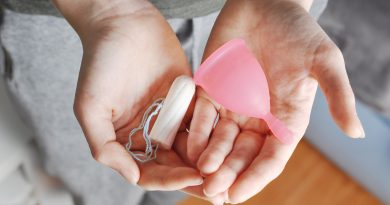The Global Market for Menstrual Products
Adapted from Learn details of the Advances in Feminine Hygiene Products Market Forecast and Segments, 2018 to 2027 from the ‘Market Reports’ website. Full publication is available at: https://consumerreportsreview.com/learn-details-of-the-advances-in-feminine-hygiene-products-market-forecast-and-segments-2018-to-2027/
In both developed and developing countries, improving access to menstrual products has been a hot topic of discussion in recent years. Governments and NGOs alike are making an effort to reach women in remote places to promote the benefits of using hygiene products during menstruation, and to distribute these products. The proliferation of health awareness programs and initiatives has led to an explosion in the number and variety of menstrual products available in stores. Among these, sanitary napkins have been the most popular, likely due to their ease of use and relatively widespread availability.
This increasing global awareness surrounding the importance of menstrual hygiene has provided the impetus for toiletry manufacturers to enter the feminine hygiene product market. The use of menstrual products allows women to preserve hygiene and prevent infections during their period. Increasing awareness of the importance of maintaining menstrual hygiene, increasing per capita income, lifestyle modifications, and increasing availability and ease of use of these products have all contributed to market growth. Successful marketing and advertising campaigns have made feminine hygiene products primary sources of income for many toiletry manufacturers. Large corporations involved in the manufacture and sale of menstrual products have benefitted from their involvement in charity initiatives that position their products in a positive light. For example, Proctor and Gamble’s feminine hygiene brand ‘Always’ teamed up with Walmart to donate menstrual products to a number of charitable or extracurricular organizations throughout the United States. The spotlight on the potential of menstrual products as a tool to alleviate poverty and empower women and girls has increased the marketability of these products and contributed to market expansion.
Steady population growth in the Asia-Pacific region, particularly in China and India, leads experts to believe that this region will serve as the highest area for growth of the feminine hygiene product market in the near future. Traditional product markets in Europe and North America continue to contribute a significant revenue share in the feminine hygiene product market, due to widespread awareness of the importance of menstrual hygiene and easy product accessibility.
Globally, it is anticipated that the market for menstrual products will only continue to grow in the years to come. However, several factors prevent the ubiquitous usage of these products. A significant barrier to uptake of menstrual products is cost. For this reason, many women have turned to homemade sanitary products as opposed to conventional ones, which has hindered market growth, especially in the wake of increasing prices. To address this, many national governments have moved to subsidize menstrual products. For example, the Indian Government has reduced the GST on sanitary napkins in order to enable the manufacture of sanitary pads at lower rates. Other barriers to uptake include potential adverse effects (such as toxic shock syndrome (TSS) resulting from tampons or sea sponges) and lack of awareness of the importance of menstrual hygiene among women in remote rural regions.
In order to address concerns and broaden their consumer base, companies involved in the manufacturing of menstrual products are constantly seeking to expand the number of available products. For example, many corporations have begun to develop more eco-friendly products to appeal to consumers who are interested in environmentalism. A desire to move away from the use of plastics in manufacturing has contributed to this increased demand for natural products. Consumer concerns regarding the chemical composition of conventional products (which often contain potentially harmful chemicals, dyes, and toxins) will likely contribute to a surge in the market for organic products in the years to come. In order to remain competitive in the market, corporations will be required to provide innovative solutions to the issues plaguing the sale and distribution of menstrual products, environmental concerns chief among them. Hopefully, this will lead to widespread uptake of sustainable menstrual products in the future, as the market expands to reach more and more women throughout the globe.



